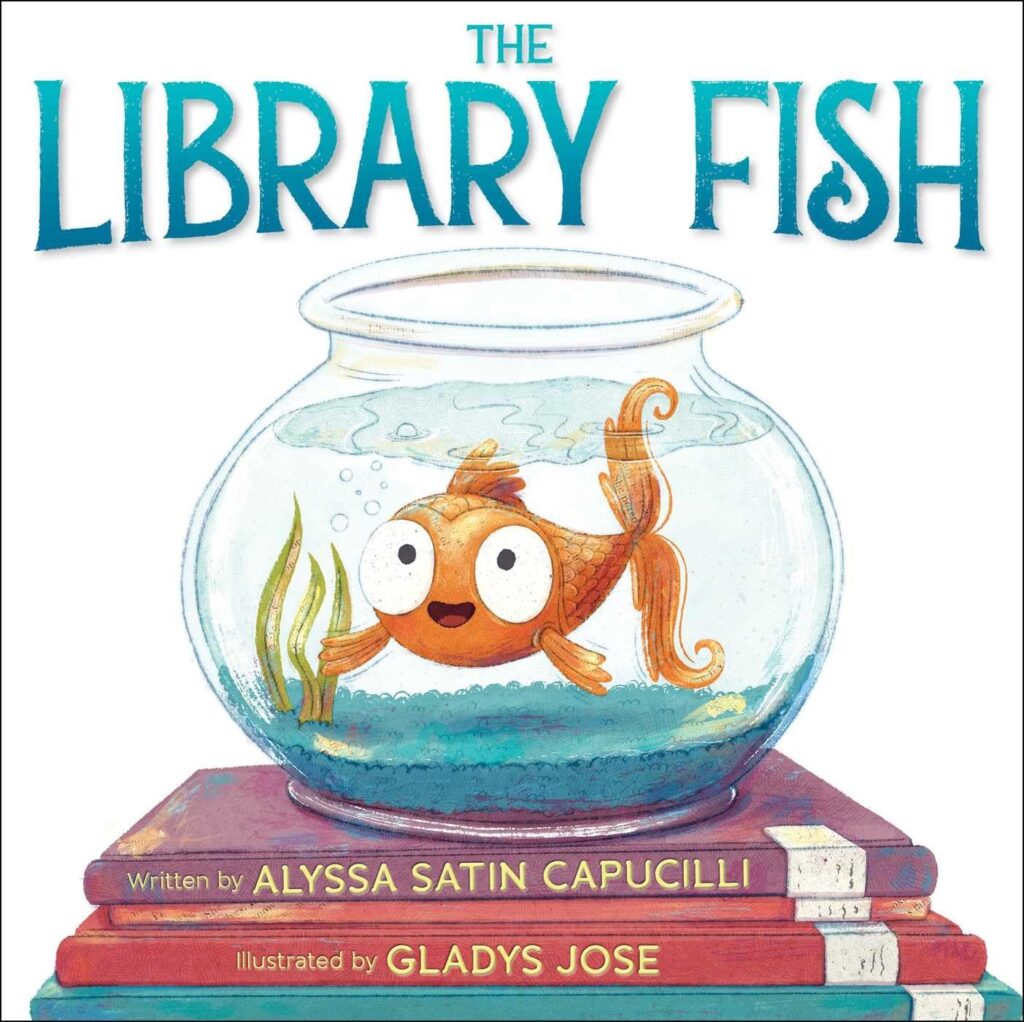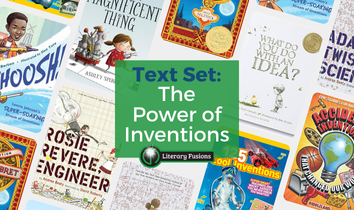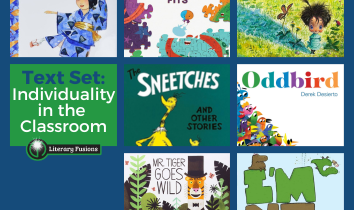
Why I Picked It Up:
Okay, let’s be real—this one was a no-brainer. The cover said “Library” and had the most adorable fish staring out of a bowl with wide, wondering eyes. Done. Sold. Everyone knows that Sherry and I have an absolute love for libraries and all things bookish, so it practically jumped into my hands.
Why I Finished It:
I’ll admit—I was a little skeptical. A whole book about a fish… in a bowl? How far can we go with that? But wow, Alyssa Satin Capucilli pulls it off beautifully. There’s whimsy, wonder, and a surprising amount of movement for a creature stuck in glass!
What really pulled me in was the heart of the story. It’s about belonging—finding your place in the world (or the library), imagining what’s possible, and discovering the power of stories… all from the perspective of a fish. And somehow, it totally works.
Who I Would Give It To:
This is an elementary must-have, especially for kindergarten and first grade. I’d hand it straight to any elementary librarian introducing young students to the magic of the library for the first time. It’s such a gentle, fun, and accessible way to showcase what a library is and what stories can do.
Also, classroom teachers, if you’ve got a classroom library or reading nook, this is a great pick for helping students develop that early identity as readers with choice. It’s not about reading the “right” book—it’s about finding the one that speaks to you. Library Fish gets that.
Integration Ideas:
Genre Study
One of the things I love about this book is how it quietly (but clearly) walks readers through the variety and beauty of books. In her fishbowl perch, Library Fish learns that stories can:

★ be fantasy
★ give information
★ be funny
★ come in different languages
★ and fit you—your interests, your reading level, your needs.
Imagine using this story as the launch pad for a genre wall or reading interest survey! Let kids explore what books they like, and even more importantly, why they like them. Not everyone loves adventure. Some want facts, some want fairies, some want feelings. This book opens the door for that conversation in a really natural way.
Vocabulary and Character Traits
Library Fish discovers so much in this short story, including how characters can be brave, shy, daring, or kind. This is a perfect lead-in for a mini-lesson on character traits vs. feelings.
Quick hands-on activity idea:
Put students in small groups with character cards (we’ve got these in our shop!) and have them sort them into two categories: Feelings (temporary) and Traits (who the character is). Then act out a few and have classmates guess—is this a feeling or a trait?

You can even create a “Wall of Words” and add new character traits as you encounter them in books together. Watch students start using these in their own writing—total win.
Bonus Vocabulary Focus:
There are fabulous verbs throughout this story—jumped, leaped, wiggled… this book begs for a movement-based lesson.
- Chart those action words with your students
- Act them out (wiggle like a fish!)
- Use them in silly sentences
- Build a Verb Wall
- Challenge students to use one new verb in their writing that week
Dialogue + Writing Conventions
This book is also an excellent mentor text for teaching dialogue, both in writing and reading fluency.

Use the page above as your model. Read it aloud, discuss the punctuation, then do a mentor-style lesson:
Try This:
- Notice the punctuation: quotes, commas, who’s talking
- Name the pattern: quotation marks go around spoken words, comma inside the quotes, tag after
- Try It: Give students a prompt—”What would your pet say if it had a dream?” and let them write their own sentence with dialogue.
- Apply It in their own stories next time they write fiction!
Ready to Dive In?
This book is a gem. It’s short, sweet, beautifully illustrated, and packs a powerful punch about the magic of stories and the places that house them.
Grab it. Read it aloud. Build a lesson around it.
And let us know, what’s your favorite book to introduce the library to young readers?
Got a go-to genre mini-lesson or a killer character trait anchor chart? We’d love to see it. Drop us a comment or a new idea.






Leave a Reply